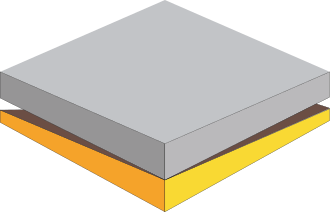pygeopressure.velocity package¶
Submodules¶
pygeopressure.velocity.conversion module¶
Routines performing velocity type conversion
-
pygeopressure.velocity.conversion.avg2int(twt, v_avg)[source]¶ - Parameters
twt (1-d ndarray)
v_avg (1-d ndarray)
- Returns
v_int
- Return type
1-d ndarray
-
pygeopressure.velocity.conversion.int2avg(twt, v_int)[source]¶ - Parameters
twt (1-d ndarray)
v_int (1-d ndarray)
- Returns
v_avg
- Return type
1-d ndarray
Notes
\[V_{int}[i](t_{i} - t_{i-1}) = V_{avg}[i] t_{i} - \ V_{avg}[i-1] t_{i-1}\]
-
pygeopressure.velocity.conversion.int2rms(twt, v_int)[source]¶ - Parameters
twt (1-d ndarray)
v_int (1-d ndarray)
- Returns
v_rms
- Return type
1-d ndarray
-
pygeopressure.velocity.conversion.rms2int(twt, v_rms)[source]¶ Convert rms velocity to interval velocity
- Parameters
twt (1-d ndarray) – input two-way-time array, in ms
rms (1-d nadarray) – rms velocity array, in m/s
- Returns
v_int – interval velocity array with the same length of twt and rms
- Return type
1-d ndarray
Notes
This routine uses Dix equation to comput inverval velocity.
\[V_{int}[i]^2 = \frac{V_{rms}[i]^2 t_{i} - V_{rms}[i-1]^2 \ t_{i-1}}{t_{i}-t_{i-1}}\]twt and rms should be of the same length of more than 2.
Examples
>>> a = np.arange(10) >>> twt = np.arange(10) >>> rms2int(twt, a) array([ 0. , 1. , 2.64575131, 4.35889894, 6.08276253, 7.81024968, 9.53939201, 11.26942767, 13. , 14.73091986])
-
pygeopressure.velocity.conversion.twt2depth(twt, v_avg, prop_2_convert, stepDepth=4, startDepth=None, endDepth=None)[source]¶ - Parameters
twt (1-d ndarray)
v_avg (1-d ndarray)
prop_2_convert (1-d ndarray)
stepDepth (scalar)
startDpeth (optional) (scalar)
endDepth (optional) (scalar)
- Returns
newDepth (1-d ndarray) – new depth array
new_prop_2_convert (1-d ndarray) – average velocity in depth domain
pygeopressure.velocity.extrapolate module¶
Functions relating velocity trend extrapolation
-
pygeopressure.velocity.extrapolate.normal(x, a, b)[source]¶ Extrapolate velocity using normal trend.
- Parameters
x (1-d ndarray) – depth to convert
a, b (scalar) – coefficents
- Returns
out – esitmated velocity
- Return type
1-d ndarray
Notes
\[\log d{t}_{Normal}=a-bz\]is transformed to
\[v={e}^{bz-a}\]Note that the exponential relation is unphysical especially in depth bellow the interval within which the equation is calibrated.
References
- 1
C. Hottmann, R. Johnson, and others, “Estimation of formation pressures from log-derived shale properties,” Journal of Petroleum Technology, vol. 17, no. 6, pp. 717-722, 1965.
-
pygeopressure.velocity.extrapolate.normal_dt(x, a, b)[source]¶ normal trend of transit time
- Parameters
x (1-d ndarray) – depth to convert
-
pygeopressure.velocity.extrapolate.normal_log(vel_log, a, b)[source]¶ - Returns
normal velocity log
- Return type
-
pygeopressure.velocity.extrapolate.slotnick(x, k)[source]¶ Relation between velocity and depth
- Parameters
x (1-d ndarray) – Depth to convert
k (scalar) – velocity gradient
Notes
typical values of velocity gradient k falls in the range 0.6-1.0s-1
References
- 1
M. Slotnick, “On seismic computations, with applications, I,” Geophysics, vol. 1, no. 1, pp. 9-22, 1936.
pygeopressure.velocity.interpolation module¶
2-d interpolation routines
pygeopressure.velocity.smoothing module¶
2-d smoothing
-
pygeopressure.velocity.smoothing.smooth(x, window_len=11, window='hanning')[source]¶ Smooth the data using a window with requested size.
This method is based on the convolution of a scaled window with the signal. The signal is prepared by introducing reflected copies of the signal (with the window size) in both ends so that transient parts are minimized in the begining and end part of the output signal.
- Parameters
x (ndarray) – the input signal
window_len (scalar) – the dimension of the smoothing window; should be an odd integer.
window (scalar) – the type of window from ‘flat’, ‘hanning’, ‘hamming’, ‘bartlett’, ‘blackman’ flat window will produce a moving average smoothing.
- Returns
y – the smoothed signal
- Return type
ndarray
Examples
>>> t=linspace(-2,2,0.1) >>> x=sin(t)+randn(len(t))*0.1 >>> y=smooth(x)
See also
numpy.hanning(),numpy.hamming(),numpy.bartlett(),numpy.blackman(),numpy.convolve()TODO()the window parameter could be the window itself if an array instead of a string
Notes
length(output) != length(input), to correct this: return y[(window_len/2-1):-(window_len/2)] instead of just y.
